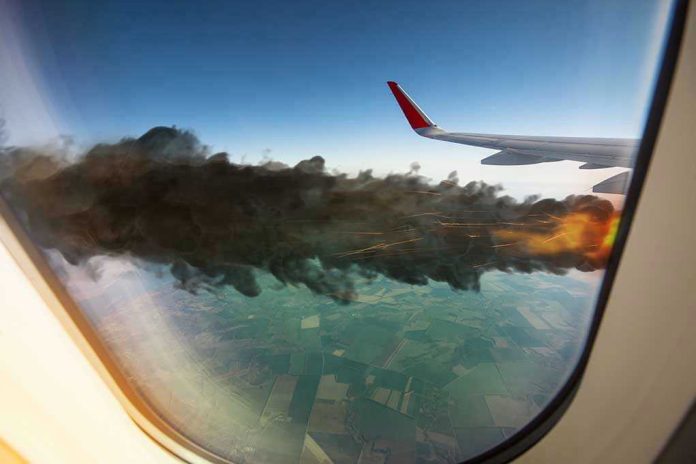
On a fateful July day in 2025, a Soviet-era plane on a routine flight in Russia’s Far East vanished from radar, leaving behind a trail of tragedy and questions.
At a Glance
- Aging Soviet-era Antonov-24 aircraft crashed, killing nearly 50 people on board.
- The remote Amur region’s challenging conditions complicated rescue operations.
- Russia’s aviation safety, especially regarding older aircraft, faces renewed scrutiny.
- Investigation focuses on adverse weather, aircraft age, and potential technical errors.
Tragic Crash in the Amur Region
The ill-fated Antonov-24, a relic from the Soviet era, was operated by Angara Airlines on its route from Blagoveshchensk to Tynda. On July 24, 2025, this nearly 50-year-old aircraft disappeared from radar, only to be found later engulfed in flames in a remote, forested area. Despite having its airworthiness certificate extended until 2036, the aircraft’s age and the challenging weather conditions on that day contributed to its tragic end. The harsh terrain of the Amur region, known for its vast forests and unpredictable weather, made both flying and rescue operations particularly difficult.
Reports indicate that the plane was attempting a second landing approach when it lost contact with air traffic control. The burning wreckage was discovered on a hillside 15 km south of Tynda, with no survivors among the 43 passengers, including five children, and six crew members. The immediate aftermath saw the Amur region plunged into mourning, with Governor Vasily Orlov declaring three days of grief for the lost lives.
Stakeholders and Response
Angara Airlines, a regional carrier based in Siberia, operated the crashed An-24. The airline, regional authorities, and the Russian Emergency Situations Ministry quickly mobilized to address the disaster. Governor Orlov, alongside federal authorities, spearheaded the emergency response and public communication. The Russian aviation authorities have launched an investigation into potential flight safety violations, focusing on the aircraft’s age, the adverse weather, and possible technical or human errors.
Families of the victims, local communities, and the wider Russian public have been deeply affected by this tragedy. The crash has reignited longstanding concerns about the safety of aging aircraft still in operation in Russia’s remote regions. The investigation’s findings could lead to significant policy changes, potentially accelerating efforts to modernize Russia’s regional aviation fleet.
Long-Term Implications and Industry Impact
The immediate loss of life is a profound tragedy, but the crash also highlights broader systemic issues within Russia’s regional aviation sector. The continued reliance on Soviet-era aircraft like the An-24, despite their obsolescence by modern standards, raises questions about regulatory oversight and the economic challenges of fleet modernization. The Amur region’s infrastructure limitations further complicate these challenges, making it difficult to deploy newer, more advanced aircraft.
This incident could lead to increased scrutiny of aircraft maintenance and certification practices, especially for older planes. Angara Airlines and similar carriers operating in remote areas may face heightened regulatory pressure and financial implications as a result. Moreover, the crash underscores the urgent need for investment in aviation infrastructure and safety measures, particularly in Russia’s geographically challenging and sparsely populated regions.
Expert Perspectives and Analysis
Aviation safety experts have long warned about the risks associated with operating aging aircraft in harsh environments. The An-24, while robust, is outdated, and its continued use is a point of contention among safety advocates. Analysts emphasize the unique challenges posed by Russia’s vast geography and limited infrastructure, which complicate efforts to update the regional aviation fleet.
Some experts argue that the crash reflects systemic issues within Russian aviation, including regulatory gaps and economic constraints. Others point to the adverse weather and operational challenges unique to the Far East as contributing factors. While the investigation is ongoing, the combination of these elements will likely shape the industry’s future and inform necessary policy reforms.














